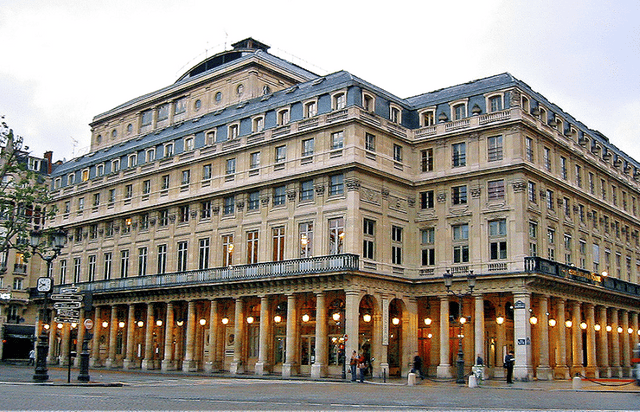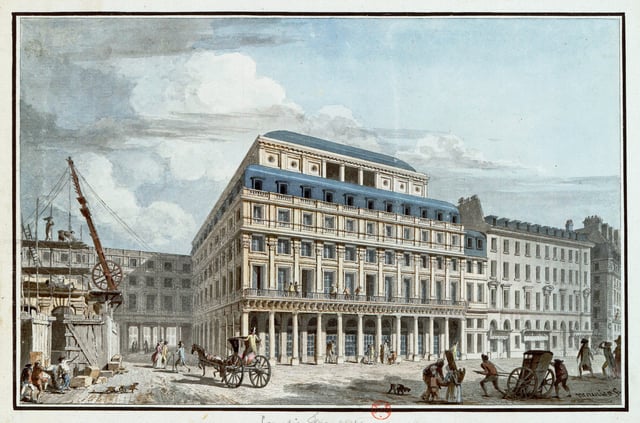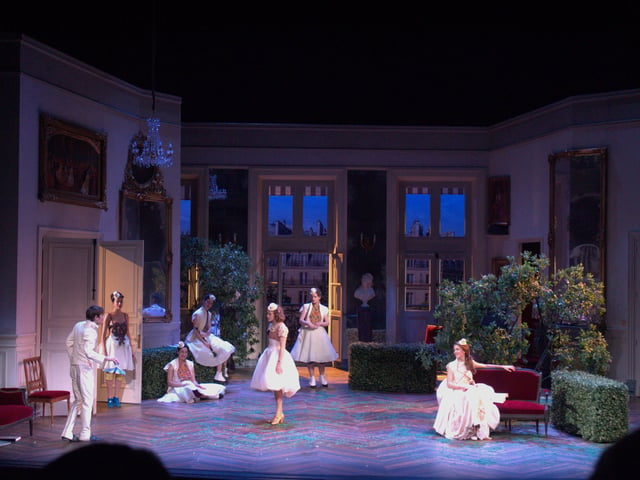Comédie-Française

Comédie-Française

Comédie-Française, late 18th century

A performance of Marivaux's La Double Inconstance in 2015
The Comédie-Française (French pronunciation: [kɔmedi fʁɑ̃sɛːz]) or Théâtre-Français (IPA: [teɑtʁ(ə) fʁɑ̃sɛ]) is one of the few state theatres in France. Founded in 1680, it is the oldest active theatre company in the world. Established as a French state-controlled entity in 1995, it is the only state theatre in France to have its own permanent troupe of actors. The company's primary venue is the Salle Richelieu, which is a part of the Palais-Royal complex and located at 2 rue de Richelieu on the Place André-Malraux in the 1st arrondissement of Paris.
The theatre has also been known as the Théâtre de la République and popularly as "La Maison de Molière" (The House of Molière). It acquired the latter name from the troupe of the best-known playwright associated with the Comédie-Française, Molière. He was considered the patron of French actors. He died seven years before his troupe became known as the Comédie-Française, but the company continued to be known as "La Maison de Molière" even after the official change of name.[1]
History

Iconic corner, entry to the Salle Richelieu, 2009.
The Comédie-Française was founded on 8 August 1680 by a decree of Louis XIV merging the only two Parisian acting troupes of the time, the troupe of the Guénégaud Theatre and that of the Hôtel de Bourgogne.[2] On the death of Molière in 1673, the troupe at the Guénégaud had been formed by a merger of the Théâtre du Marais and the Troupe de Molière.[3] Two years later they received a royal grant of 12,000 livres per year; and seven years later they received their present designation.[1] Thus the Comédie-Française may be said to have an unbroken tradition reaching back to the days of Molière.[1]
The company gave its first performance on 25 August 1680 at the Guénégaud.[4] Its leading actors included Molière's widow, Armande Béjart, her husband, Guérin d'Estriché, La Grange, Mlle Champmeslé, Baron, Hauteroche, and Raymond Poisson.[5] The repertoire consisted of the collection of theatrical works by Molière and Jean Racine, along with a few works by Pierre Corneille, Paul Scarron and Jean Rotrou.
In the 18th century, the Comédie-Française was often enjoyed by the French nobility, since the price to watch at the theater was expensive.
On the performance of Joseph Chénier's anti-monarchical play Charles IX in 1789, violent political discussions arose among the performers, and ultimately they split into two sections: the Republican party, under the young tragedian Talma, establishing a new theatre under the name "Théâtre de la République," on the site of the present building in the Rue de Richelieu; while the Royalist section took the title "Théâtre de la Nation."[2] On 3 September 1793, during the French Revolution, the Théâtre de la Nation was closed by order of the Committee of Public Safety for putting on the allegedly seditious play Pamela, and the actors were imprisoned though gradually released later. On 31 May 1799, the new government made the Salle Richelieu available and allowed the actors to reconstitute the troupe.
The Comédie-Française today has a repertoire of 3,000 works and three theatres in Paris (Salle Richelieu, next to the Palais Royal; théâtre du Vieux-Colombier; Studio-Théâtre).
Theatre buildings
The Comédie-Française has had several homes since its inception. In 1689, it was established in a theatre across from the Café Procope. The Odéon was designed by architects Marie-Joseph Peyre (1730–1785) and Charles De Wailly (1730–1798). From 1770 to 1782, the Comédie performed in the theatre in the royal palace of the Tuileries.[1] Since 1799, the Comédie-Française has been housed in the Salle Richelieu (architect Victor Louis) at 2, rue de Richelieu. This theatre was enlarged and modified in the 1800s, then rebuilt in 1900 after a severe fire.
Theatrical troupe
The membership of the theatrical troupe is divided into "sociétaires" and "pensionnaires." The former are regular members of the organisation and as such receive a pension after 20 years of service, while the latter are paid actors who may, after a certain length of service, become "sociétaires." The names of nearly all the great actors and dramatists of France have, at some time in their career, been associated with that of the Comédie-Française.[1]
Administrators of the Comédie-Française
The chief administrator of the Comédie-Française has been given the title administrateur général since Simonis' term of 1850. Before that, a variety of titles were given.
See also
Troupe of the Comédie-Française in 1680
Troupe of the Comédie-Française in 1752
Troupe of the Comédie-Française in 1754
Troupe of the Comédie-Française in 1755
Troupe of the Comédie-Française in 1790
List of works by Henri Chapu. Bust of Alexandre Dumas Pere